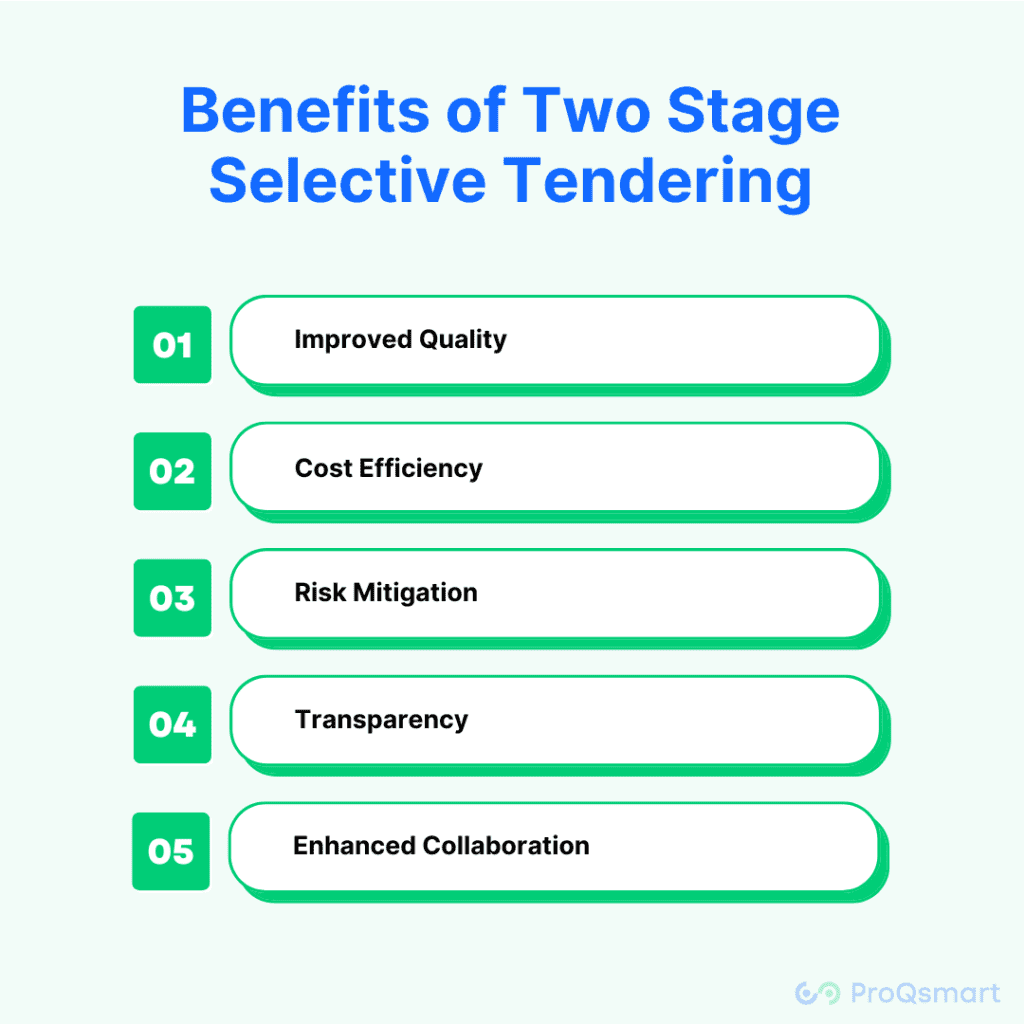Two stage selective tendering is a procurement method widely used in construction to optimize the selection process of contractors and suppliers. This approach involves two distinct stages, enhancing transparency, competition, and overall project management. This guide delves into the definition, stages, and benefits of two stage selective tendering, emphasizing its importance in the construction industry.
What is Two Stage Selective Tendering?
Two Stage Selective Tendering Defined:
Two stage selective tendering is a procurement process where the tendering procedure is divided into two separate phases. Initially, a shortlist of qualified contractors is created based on their capability and experience. In the second stage, these shortlisted contractors are invited to submit detailed bids based on comprehensive project information.
Key Characteristics:
- Initial Shortlisting: Focuses on selecting competent contractors based on qualifications and experience.
- Detailed Bidding: Shortlisted contractors provide detailed bids with cost estimates and project execution plans.
- Enhanced Competition: Ensures that only capable contractors participate in the final bidding, promoting quality and competitive pricing.
Stages of Tendering in Two Stage Selective Tendering
Stage One: Prequalification
Invitation to Tender: Organizations invite potential contractors to submit their credentials.
Prequalification Criteria: Contractors are evaluated based on experience, financial stability, technical capability, and past performance.
Shortlisting: A shortlist of qualified contractors is created based on the prequalification assessment.
Stage Two: Detailed Bidding
Detailed Project Information: Shortlisted contractors receive comprehensive project details, including specifications, drawings, and requirements.
Bid Submission: Contractors submit detailed bids, including cost estimates, timelines, and methodologies.
Bid Evaluation: Bids are evaluated based on predefined criteria such as cost, quality, and feasibility.
Contract Award: The contract is awarded to the contractor offering the best value.
Benefits of Two Stage Selective Tendering

Improved Quality: Ensures that only qualified contractors with proven track records are considered.
Cost Efficiency: Competitive bidding among capable contractors leads to cost-effective solutions.
Risk Mitigation: Reduces the risk of project delays and quality issues by selecting experienced contractors.
Transparency: Provides a clear and structured procurement process, enhancing transparency and fairness.
Enhanced Collaboration: Allows for early contractor involvement, promoting better collaboration and project planning.
Importance in Construction
Two stage selective tendering is particularly valuable in construction due to its ability to:
- Enhance Project Management: Facilitates better planning and execution by involving qualified contractors from the outset.
- Optimize Resource Allocation: Ensures efficient use of resources by selecting capable contractors.
- Ensure Compliance: Promotes adherence to industry standards and regulatory requirements.
Conclusion
Two-stage selective tendering is a powerful procurement method that enhances the efficiency and quality of contractor selection in construction projects. By understanding its stages and benefits, organizations can optimize their procurement strategies to ensure successful project outcomes.
To elevate your procurement process and experience the advantages of two-stage selective tendering firsthand, consider exploring ProQsmart’s innovative solutions. Book a demo today to see how ProQsmart can streamline your tendering processes and help you achieve superior results in your projects.


